Meet Brooklyn’s Inspired New Wave of Italian Chefs
Leaving red sauce to the traditionalists, four pioneers experiment with a simple-yet-sophisticated cuisine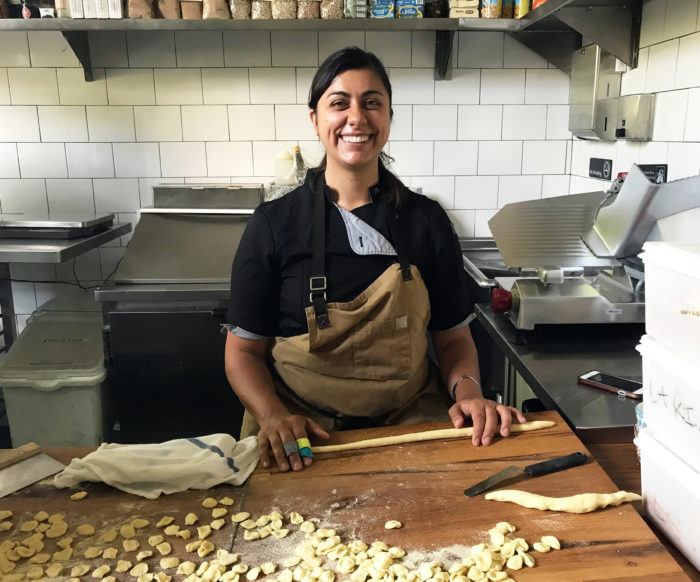
LaRina chef Silvia Barban making orecchiette pasta in the kitchen of her Fort Greene restaurant (Photo by Angelica Frey)
For the past century, Brooklyn was known as a mecca of red-sauce eateries, a home of old-school Italian-American cuisine. Then farm-to-table happened, with a newfound appreciation of Italian food that is both informal and refined, looking directly to its ancestral home rather than to Italian-American culinary traditions.
Now we can sample the full bloom of that movement. In just the last two years, several chefs have opened acclaimed new Italian restaurants in Brooklyn. We focus on four of them here: Silvia Barban of LaRina, Al Di Meglio of Barano, Missy Robbins of Lilia and Misi, and Anthony Ricco of Leuca. While they each have individual philosophies about food, they all serve what we can define as simple-but-refined Italian fare. They tread the line between “neighborhood” and “destination” restaurant as well, featuring high-end but casual menus.
And more is to come: this week the two founders of Frankies 457 Spuntino in Carroll Gardens, pioneers of the concept since 2004, announced that they will close their adjacent Prime Meats restaurant to double down on Italian, expanding Frankies 457 and adding a wine bar. “We’ve tried so many things but over time, it seems like what’s dear to us, what we really love, is this Italian thing,” co-owner Frank Castronovo told the New York Times.
The Bridge contributor Angelica Frey, a native of Milan, offers a look at four chefs who launched in 2016 to see how they define what Italian cooking means today, how they deal with the weight of Italian tradition, and why serving homemade pasta is so rewarding.
Silvia Barban, LaRina Pastificio & Vino
As we were speaking at her Fort Greene restaurant, chef Silvia Barban was busy making homemade orecchiette. “We’ll probably make them with Italian sausage and broccolini,” she anticipated. That day, they would roll out the new seasonal menu.
Her focus on homemade pasta is both a personal passion and a savvy business decision. “Whenever a Brooklyn-based Italian wanted to get fresh pasta, they’d have to trek all the way to Eataly,” she explained. “But we also sell fresh pasta directly, so a neighbor can just stop by and buy it by the pound.” Fresh pasta, she observed, has been a hot item for the past couple of years in the restaurant industry. While there’s a good balance between supply and demand, business competition is strong.
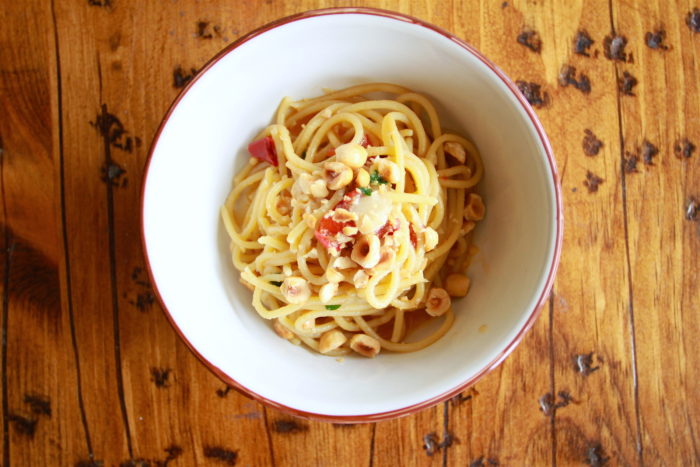
At LaRina, the menu is pasta-focused, seasonal, and with a contemporary twist (Photo courtesy of LaRina)
“So you have to ensure your goods are of the highest level,” she explained. And this also means pleasing the gluten-free crowd: LaRina offers one variety of gluten-free pasta, pappardelle, which can then be combined with a selection of different sauces. While demand for it is strong, it’s not necessarily from people who are allergic to gluten. “Mostly, they just want to watch what they’re eating,” she said. “They ask for a bread-based antipasto, but then want gluten-free pasta.”
Born and raised in Northern Italy, Barban arrived in New York while working with Michelin-starred chef Giancarlo Perbellini, who was tasked with curating the opening of a restaurant in Manhattan’s Chelsea Market. “I was supposed to only stay for the three months … and now it’s been six years.” She soon started hanging out with a group of young Italian restaurateurs, and one of them, Giulia Pelliccioni, just happened in 2014 to need a chef for her Clinton Hill eatery Aita. Two years later, the team expanded with LaRina, where Barban built the menu from scratch: pasta-focused, seasonal, and with a slight contemporary twist, as with her smoked spaghetti aglio e oglio.
Menus change on a seasonal basis, but it depends on what’s available. “This year, spring came really late,” she explains. “So why would we change our menu in April, and use peas from California when they’re not available here yet?” While living in America has broadened her horizons and made her a little bit more experimental, there are some American ways of doing Italian food that she will never get behind. “I would never put butter in tomato sauce,” she said. “Surely, some Italian sauces require butter, but it’s on a one-in-ten case basis.”
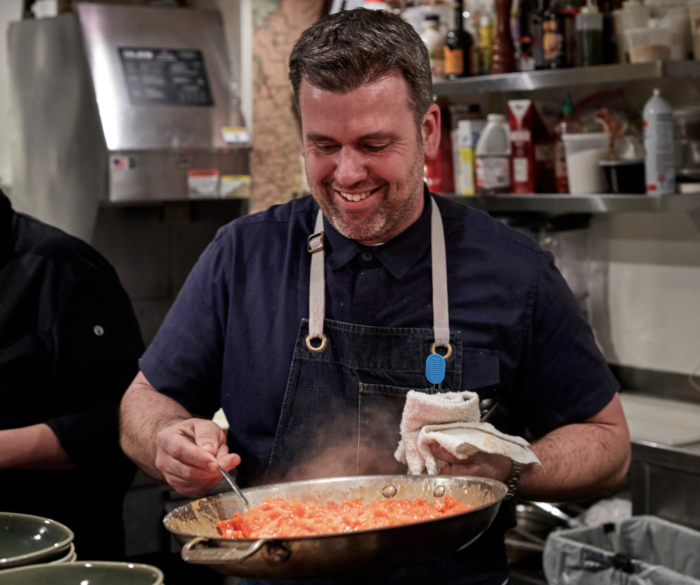
“You can always stay true to a cuisine and find a different take on it,” says Di Meglio (Photo courtesy of Barano)
Al Di Meglio, Barano
“We got beat up yesterday,” chef Al Di Meglio told me over the phone. As the chef and partner in South Williamsburg’s Barano, he had just survived Barano’s first NYC Restaurant Week, and was pleasantly surprised by the wave of customers in late summer, considering that Restaurant Week was originally meant to support restaurants in the slowest times. “You have to submit to get into it. They want to make sure you’re an accredited restaurant. They want the cream of the crop,” he said. And he fit the bill, as the former chef of the acclaimed Rubirosa and a veteran of Le Cirque and its sister restaurant Osteria del Circo.
When he and his business partners opened Barano, he asked himself one important question when designing his menu: “Considering how many Italian restaurants there are in NYC, why would you want to come to me, in South Williamsburg, where the closest train is a 12-minute walk?” While Rubirosa was what he called a riff on red-sauce restaurants and paid tribute to the food staples of his childhood, for Barano he wanted something contemporary yet faithful to his ancestral homeland. “How do I convert [Italian cuisine] into something fun without shunning the past?” he remembers thinking.
He grew up with the belief that traditional Italian food should not be tinkered with. Fortunately, he grew out of that attitude. “You can always stay true to a cuisine and find a different take on it,” he said. “For me, I grew up Italian all my life, and I thought maybe there’s a way to get a better flavor.”
His menu is a testimony to his belief. Take his saffron gigli, garnished with honey and pecorino. “If you look at Sardinia, they have maloreddus, flour gnocchi; they put a little saffron in it,” he recalled. “I looked at the recipe and was, ‘Why don’t I just put a lot of saffron into the pasta?” Honey is a tribute to the Abruzzi and Tuscany regions, where beekeeping is widely practiced. To add a salty element, he chose pecorino, which brought roundness and body to the dish. Sure, purists might scoff at this experimentation. But, as Di Meglio puts it, there’s a reason why they go through 100 orders of those a week.
“The whole Don’t-Touch-It food philosophy is out the window. Everybody loves Massimo Bottura, but three, four years ago, did we even know who he was?” asked Di Meglio. “He took a risk in taking Italian food and making it his own. They were shunning him and now he’s the best chef in the whole world.”
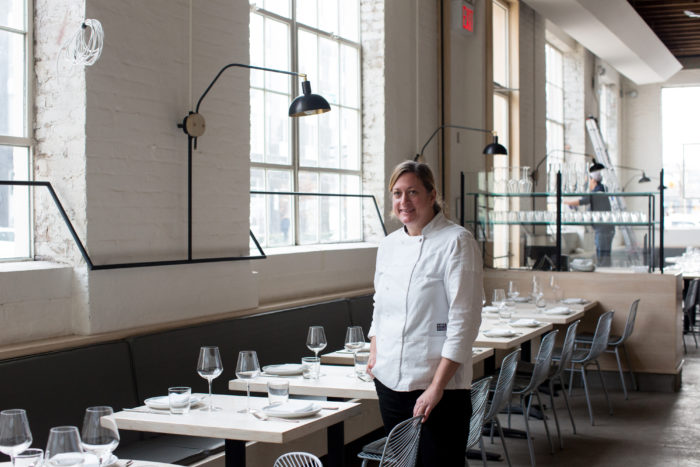
Missy Robbins in her restaurant Lilia as it was preparing to open in 2016 (Photo by Pearl Gabel/The New York Times/Redux)
Missy Robbins, Lilia and Misi
The new grand dame of Italian cuisine, Missy Robbins took Brooklyn by storm when she opened the upscale yet artisanal Williamsburg eatery Lilia, which soon received three stars from the New York Times and was the subject of several anecdotes featuring celebrities patiently waiting for a table. Her arrival was much-anticipated, since it ended a three-year hiatus from the professional kitchen after she left the helm of Manhattan’s A Voce restaurants.
In September 2017, Robbins published her first cookbook, Breakfast, Lunch, Dinner … Life, which, on top of sharing her culinary wisdom, also highlights her healthy-eating journey while she was away from the industry. “Most people think my career is my biggest accomplishment,” she told Food and Wine, “But I know that getting healthy and losing the extra weight during my year off is my greatest achievement yet.” She credits the program Weight Watchers for this, but also discovered useful hacks to apply in her famed Italian kitchen (substitute anchovy paste and water for olive oil for a sauté base).
Her reputation has only grown this year. In May, she won the James Beard Award for best chef in New York City. Earlier this month, she officially opened the doors of her second restaurant, Misi, situated along the Williamsburg waterfront in the Domino Sugar factory redevelopment. The new eatery is focused on vegetable-forward antipasti (olive-oil poached zucchini; slow-roasted tomatoes; grilled runner beans) and homemade pasta (fettuccine, bucatini, corzetti, chickpea pappardelle).
Formerly a devoted West Villager, Robbins has now embraced Brooklyn as a place to live as well. “When she moved, she assumed it would be for a year or two,” wrote CNN Travel in an interview with her. “But now that she’s settled, she can’t picture herself leaving.” As Robbins herself put it: “I am part of the community.”
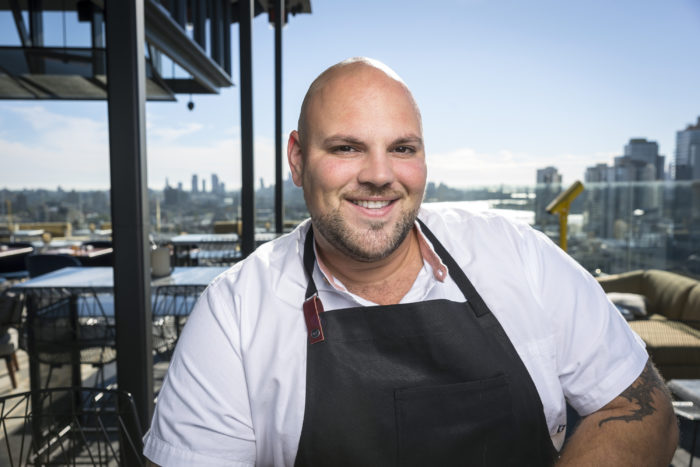
“We’re doing a lot of wood-fired cooking, on oak and hickory. We throw herbs inside the fire,” said Ricco (Photo by Noah Fecks, courtesy of Leuca)
Anthony Ricco, Leuca
Executive Chef Anthony Ricco designed Leuca’s menu with the understanding that the restaurant needed to fill three roles: as a local spot, a destination, and a hotel restaurant. Situated in Williamsburg’s swank William Vale, it was conceived as an inviting, sophisticated-yet-approachable setting for travelers and locals alike. “We were looking in Brooklyn for a while. In Manhattan, real estate can always be difficult,” said Ricco. “We were able to find the right space in a neighborhood that was already established, and that’s always important. The neighborhood has changed substantially in the past five, 10, 20 years and has become much more dense.”
The cuisine has the universal appeal necessary in such a setting, but with an exploratory edge. “Leuca is an Italian restaurant that is focused on southern Italian cooking,” he explained. “There’s a lot of vibrancy there, all kinds of great flavors that we wanted to explore. We’re doing a lot of wood-fired cooking, on oak and hickory. We throw herbs inside the fire, there’s definitely some char involved.”
Their pasta is homemade, which Ricco calls very technique-driven. “Not all pasta is equal, and dough varies due to humidity and climate,” he said. “We’ve learned over time that the process of finding the best ingredients is hugely important, and makes for better dough.”
Leuca is the first Brooklyn-based restaurant helmed by Noho Hospitality Group, a collection of upscale food and beverage spots in New York City and Miami. Equal emphasis was put both on the menu and the decor. “Leuca can be experienced in many ways throughout the day,” said Ricco. “The craftsmanship in the carved wood bar shines in the daylight, while in the evening, guests step under roman arches into the main dining room to discover oak-cladded walls and contemporary art,” he said. “In many ways, the various design elements are meant to be both unexpected and comforting.”










